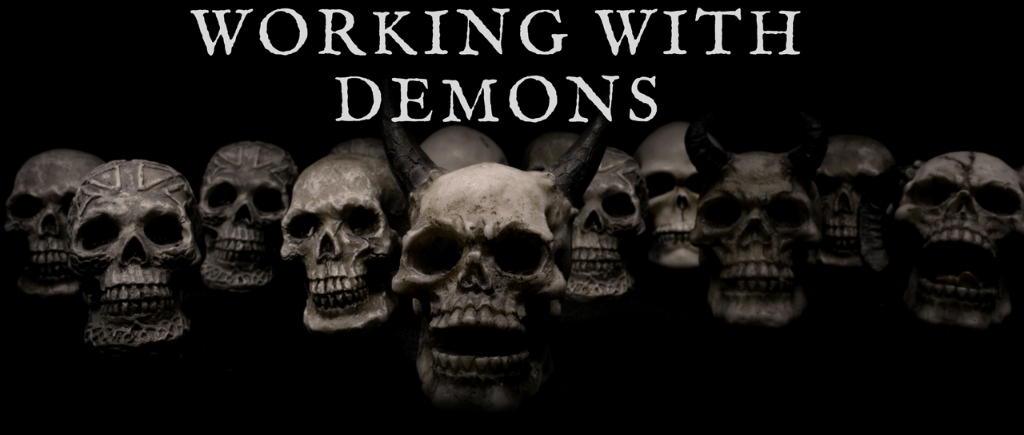Blog, Demons, Working With Demons
Rabisu: The Babylonian Demon of Thresholds
Rabisu are demons mentioned in ancient Babylonian and Akkadian lore. These demons lurk in secret places and in shadows to attack people as they make way to their homes. Ancient Babylonians considered these creatures as objects of fear and terror. It is said that no doors or bolts can keep the Rabisu away from anyone or any home. They are also known to perch on rooftops in wait for a particular kind of prey which they consider delicious to feed on; newborn infants or neonates
Other names: Rabasa, the Vagabond.
Appearances:
They are described as fallen angels who changed into vampiric spirits and appeared in human form but with features of a demon and the wings of an angel. They were once part of the angelic rebels who were sent away from heaven. This action of disgrace caused them to feed on human energy, manipulate objects, cause havoc and fear among humans.
About:
The Rabisu can be called upon by sorcerers for power. These spirits tend to gain control over the mind of the sorcerers. Not all Rabisu are evil. When summoned, they demand payment in the form of a cup.
In hell, these demons reside in the great desert of anguish where they attack souls who have recently arrived in hell. Nobody knows how numerous the Rabisu are, but we may assume that the numbers are huge indeed.
Other places where Rabisu were mentioned:
- The book titled The Religion of Babylonia and Assyria which was written by Theophilus G. Pinches describes Rabisu as “the seizer“.
- Chapter 4 of the Book of Genesis lines 6 and 7 in the bible reads thus:
“So the LORD said to Cain: “Why are you so resentful and crestfallen? If you do well, you can hold up your head; but if not, sin is a demon lurking at the door: his urge is toward you, yet you can be his master.”
Genesis 4:7:
“If thou doest not well, sin lieth at the door.”
The New American Bible believes that “demon lurking” which in the Hebrew tongue means “the croucher” is similar to the word Rabisu. Therefore, there is a possibility that this displays a continued tradition in the emerging culture of the Hebrews.
- Rabisu were listed in the rituals of Shurpu, which has a lot to do with burning. The Shurpu ritual allows us to banish Rabisu described as “a demon that springs unawares on its victims.”
- In the book titled Simon Necronomicon, which contains a blend of myths from all sorts of culture, including that of the Sumerian; the Rabisu are described as ancient demons. The book talks about the god Marduk who battled Tiamat, Kingu, and Azag-Thoth.
Among the fifty names of Marduk, one finds the name Nariluggaldimmerankia, which is the sixth. Nariluggaldimmerankia is said to be the sub-commander of wind demons, described as the foe of Rabisu and all maskim who haunt humans. Marduk’s seventh name, Asaruludu, is said to have the power using his sacred word Banmaskim to banish all Maskim and Rabisu.
Working with Rabisu
A certain way of driving the Rabisu away is through the use of sea salt which is placed on the threshold of the house; the favourite hiding place of the Rabisu. Sea salt would send them away as salt represents purification and is gotten from water, which is the source of life.
Rabisu can be trapped and sealed using an incantation bowl. This is a terra-cotta bowl inscribed with charms or magical texts used to trap or drive away demons in Babylonian lore. They are also called the devil’s trap. The charms in the bowls are written in a spiral form from the rim to the centre or outside the bowl. The bowl can also have an image of a demon bound in chains while some call upon the powers of great angels to help the inhabitants of the home.
These bowls which are just of the same size as soup tureens are inverted and buried under the four corners of the foundations of houses and buildings to seal the cracks where demons could sneak in through. The incantation bowl would overturn or capture demons be it male or female; protect against evils, witchcraft, sorcery and the evil eye.
In ancient times, it is said that kings placed statues of powerful demons at their palace entrances not only to pay homage to these spirits but to ask for protection against lesser spirits. Such figures scare the lesser demons (like the Rabisu) away from such places. Crossing oneself before crossing a threshold is considered to be helpful. Some sources also claim that staying in company with good friends (i.e. the type that produces hearty laughter and pleasant noise) will drive the Rabisu away.
See Also:
- Sirchade, the Ninth Servitor of Duke Syrach
- Clisthert, Eighth Servitor of Duke Syrach
- Chenor, the Granter of Wishes
- Lamashtu: The Demoness That Kills Children
Citations:
- https://www.britannica.com/topic/Rabisu
- The Encyclopedia of demons and demonology.
- https://teresawilde.wordpress.com/2012/07/21/Rabisu-say-it-with-me-Rabisu/
- https://en.m.wikipedia.org/wiki/Rabisu
- http://www.theparanormalguide.com/blog/Rabisu
- https://demonhunterscompendium.blogspot.com/2013/

